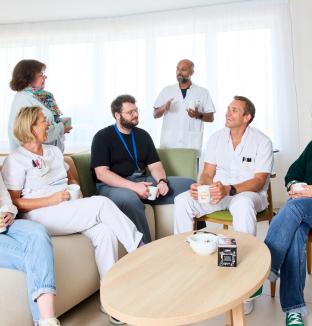Neuroplasticity: how the brain reinvents itself after a stroke
At emeis, neurological rehabilitation is not just about learning to walk or speak again. It helps people to find a new balance in their lives, thanks to the brain's incredible ability to reinvent itself. Here's how it works.
The brain, an organ capable of reorganising itself
When a patient suffers a stroke, cranial trauma or other brain injury, the brain enters a phase of increased plasticity, which favours learning and compensation. "A dead neuron will never live again. But its neighbours can learn to do the work for it," explains Cynthia Van As, emeis regional referent and coordinator of seven rehabilitation centres in the South of France.
Neurological rehabilitation relies on the brain's ability to reactivate its neuronal networks. Thanks to functional MRI, we now know that brain functions are not confined to fixed areas, but activate multiple circuits.
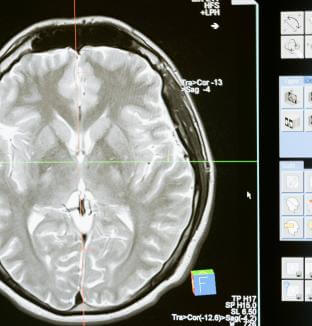
A 100% personalised emeis approach
Neurological rehabilitation cannot be a standardised protocol. At emeis, each therapist draws up a made-to-measure treatment plan based on the patient's actual functional needs, preferences and current abilities, in order to work with the doctor in charge to develop a personalised, tailored therapeutic plan.
"There is no miracle cure. There's no exercise or therapy that can be ruled out if it's proven to be effective," admits Cynthia. This approach requires a great deal of analysis and adaptation on the part of the teams. Caregivers are specifically trained in complex clinical reasoning, as well as in protocols proven effective by clinical research.
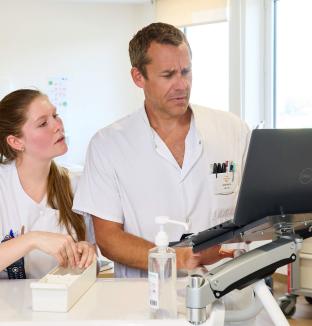
Motivation, family and environment: decisive levers
In a rehabilitation programme where motivation and resilience are key, the people around the patient play an essential role in helping them to progress. Occupational therapists assess and adapt patients' environments before they return home, in the presence of their carers, and a transition week is often set aside on discharge to encourage patients' self-education, with the support of their families. "Patients who are well looked after make better progress. The carer is often the essential link between care and home," admits Cynthia.
But the personal motivation of each patient is crucial. That's why the teams provide objective feedback and offer group activities and fun sessions. Psychological support can also be offered. Every effort is made to support morale, which can sometimes be sorely tested, particularly when hospitalisation is prolonged: "Sometimes I tell them: take a break. Take two days to do what makes you happy. Reconnect with yourself and come back with a new state of mind," says Cynthia.
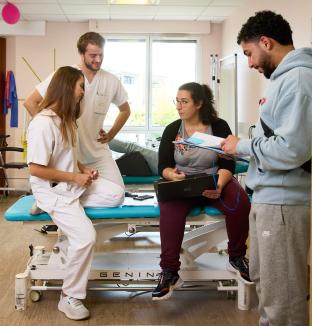
Regaining maximum capacity
A patient in her fifties arrived five days after a stroke with a limp left arm and impaired sensation. Thanks to her extraordinary motivation and daily use of mirror therapy - in addition to all the appointments scheduled by the care teams - she was able to recover almost 80% of the mobility and motor control in her arm.
Another patient, a former singer and vocal coach with speech difficulties, told the emeis teams that regaining his voice and ability to communicate was more important to him than walking. The team adapted the entire programme to prioritise speech therapy. The result: significant progress... and great satisfaction, as he was able to regain the maximum functional capacity required for day to day activities.
"We always start rehabilitation with the same question: what's most important to you?" adds Cynthia.
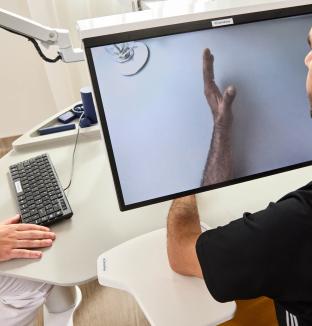
Rehabilitate or rehabilitate: the two paths to functional rehabilitation
When recovery is not possible, rehabilitation seeks to compensate by finding different solutions: changing the dominant hand, reorganising the living space to adapt it to the patient's abilities, or relearning in a different way using technical aids. In all cases, the patient remains the central player in his or her progress.
Being active, curious, intellectually and/or physically engaged makes you more likely to recover. Some patients already arrive very mentally 'trained', which makes the team's work much easier. "One patient who was an expert in neurolinguistic programming almost completely carried out his own rehabilitation. I was just there to guide him," Cynthia readily admits.
In fact, only the patient can have the deep desire to progress. The patient's therapeutic plan is therefore at the heart of rehabilitation. It's not up to the carers to decide for them what's most important, but it is their duty to listen to them, understand them and help them set their priorities. The aim is to help them rediscover what gives meaning to their daily lives.
"Our job is to create the best possible conditions for their rehabilitation and recovery. Their job is to believe," concludes Cynthia.
